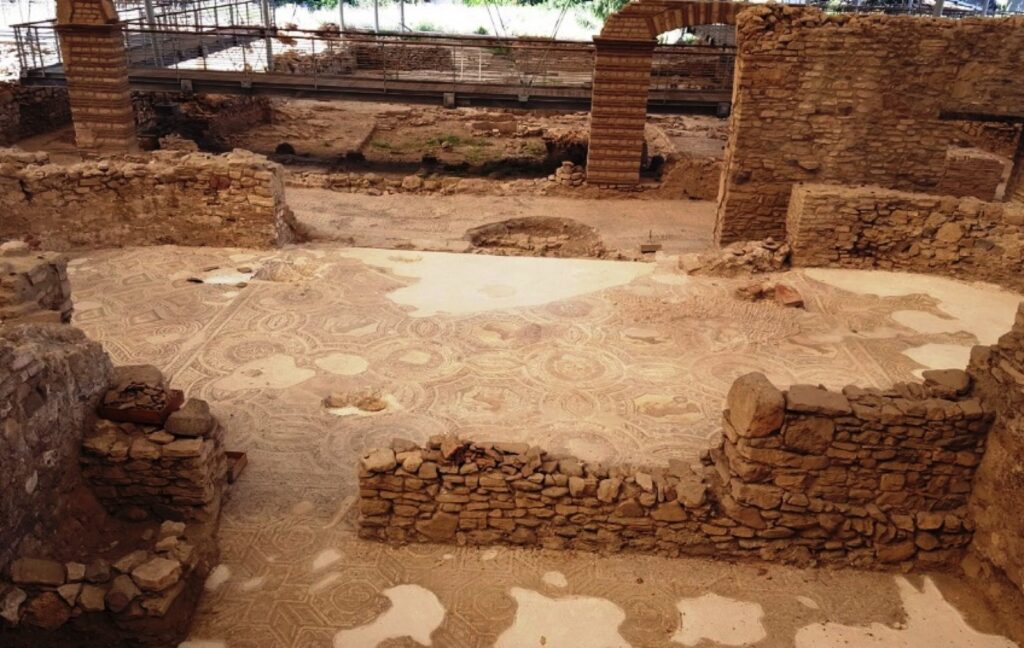The rooms and scenes depicted in the mosaics of the Villa Romana del Casale eloquently interpret the profile that would have distinguished the figure of the dominus, so much so as to validate some of the theories suggested over the years by archaeologists.
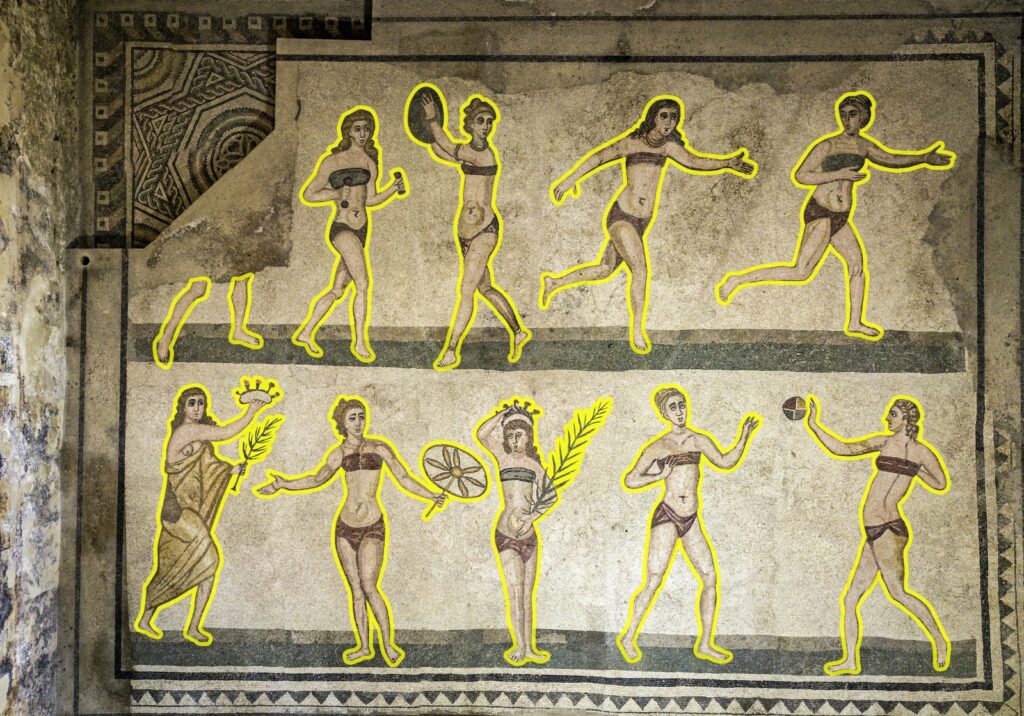
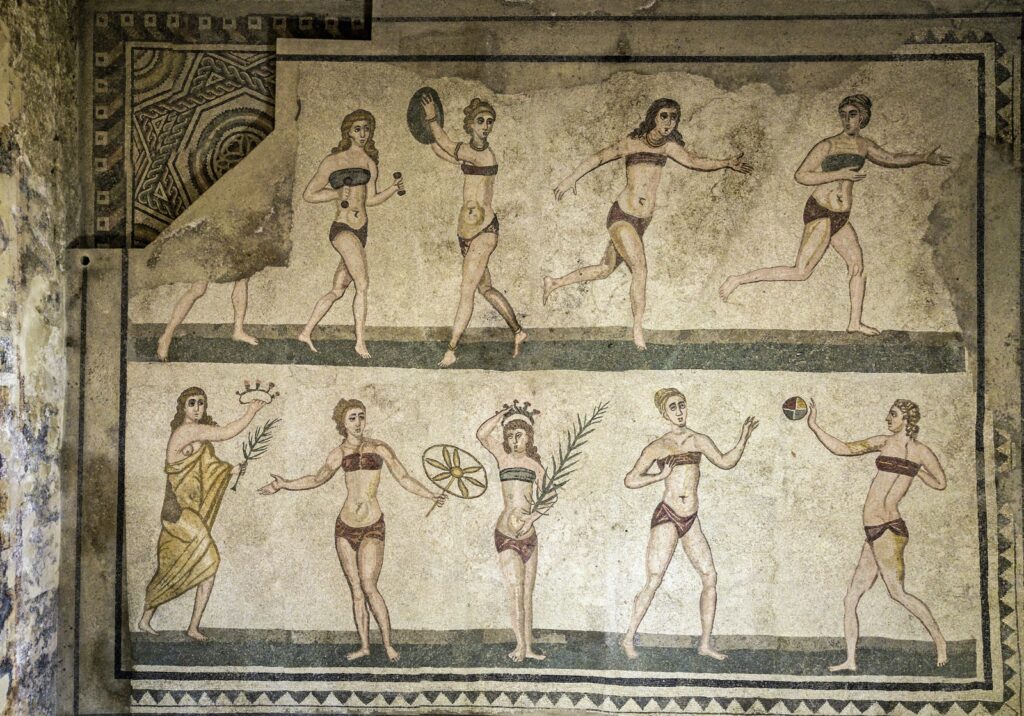
As a matter of fact, it is plausible to say that the late antiquity residence, for all its magnificence, reflects the complexity of life and the activities of someone of high social status, who commissioned within it a public route 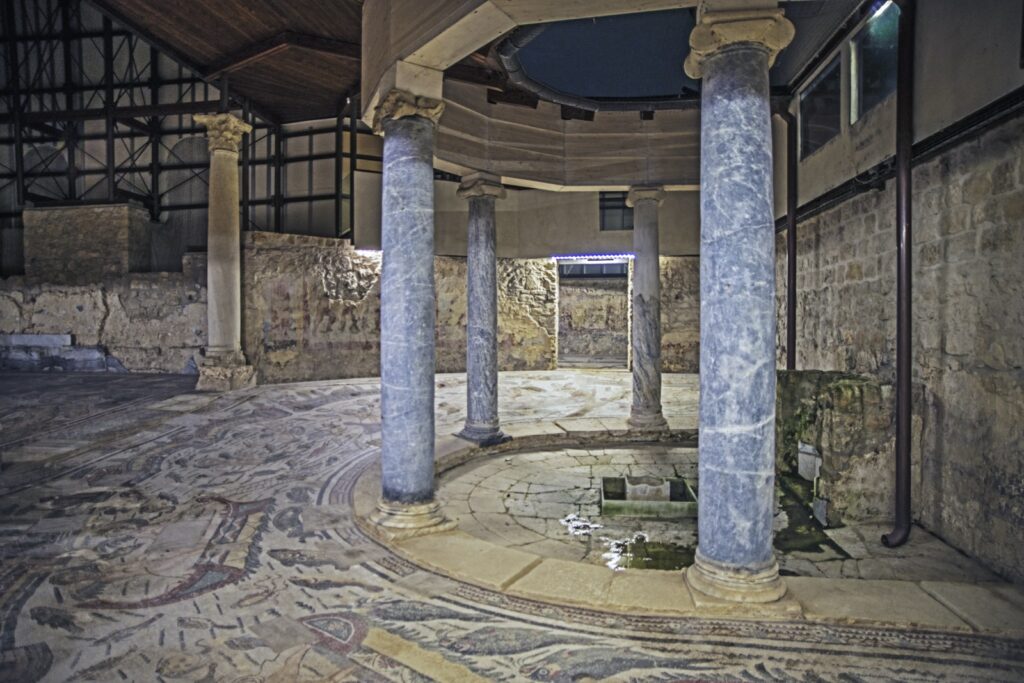 in addition to a second one intended for the more private circle.
in addition to a second one intended for the more private circle.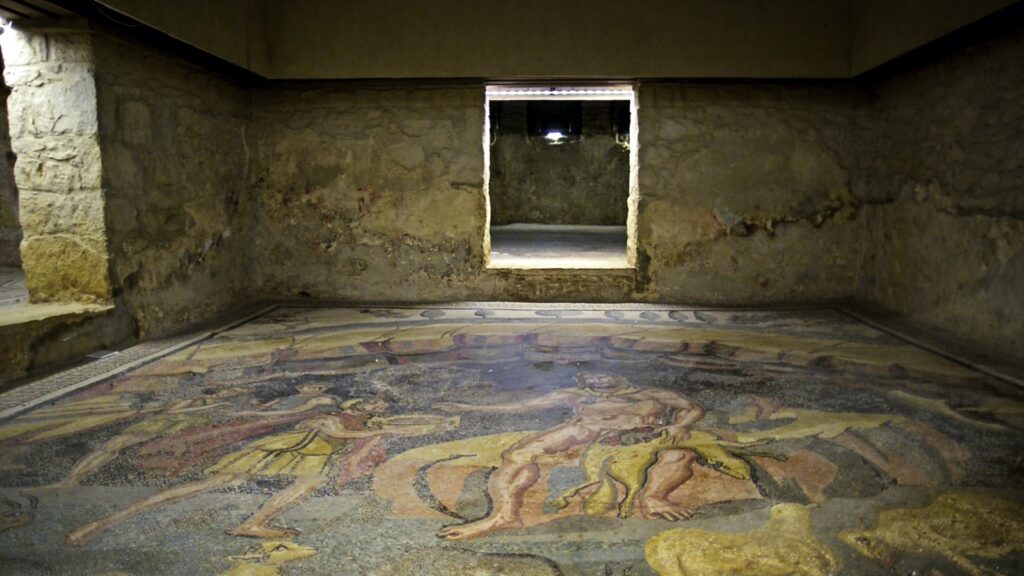 The sequence of the official places unfolds from the monumental entrance
The sequence of the official places unfolds from the monumental entrance 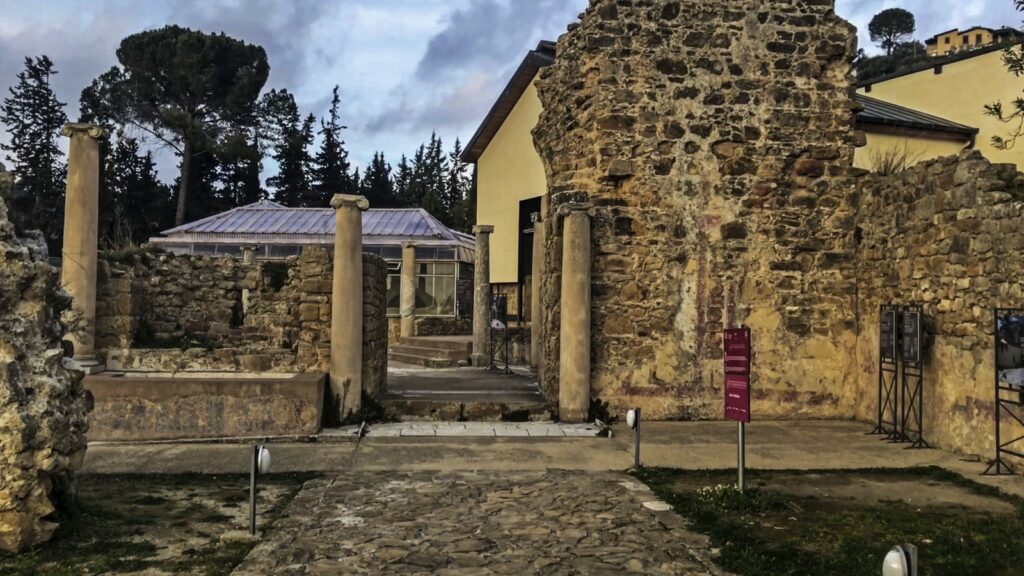 towards the
vestibule
towards the
vestibule
and the southern part of the
quadrangular peristyle
to the
biapsidal corridor
of the “great hunt”, which serves as a narthex, or place of passage, for those who had to access the most imposing and important space of this vast work of architecture, the
basilica
, reserved for audiences.
The refinement of the marble materials that covered the walls and the
opus sectile
paving undoubtedly recalls its function of reception, as can be seen on the walls of other areas of the villa not used by the family. The large biapsidal corridor depicting scenes of capturing exotic animals
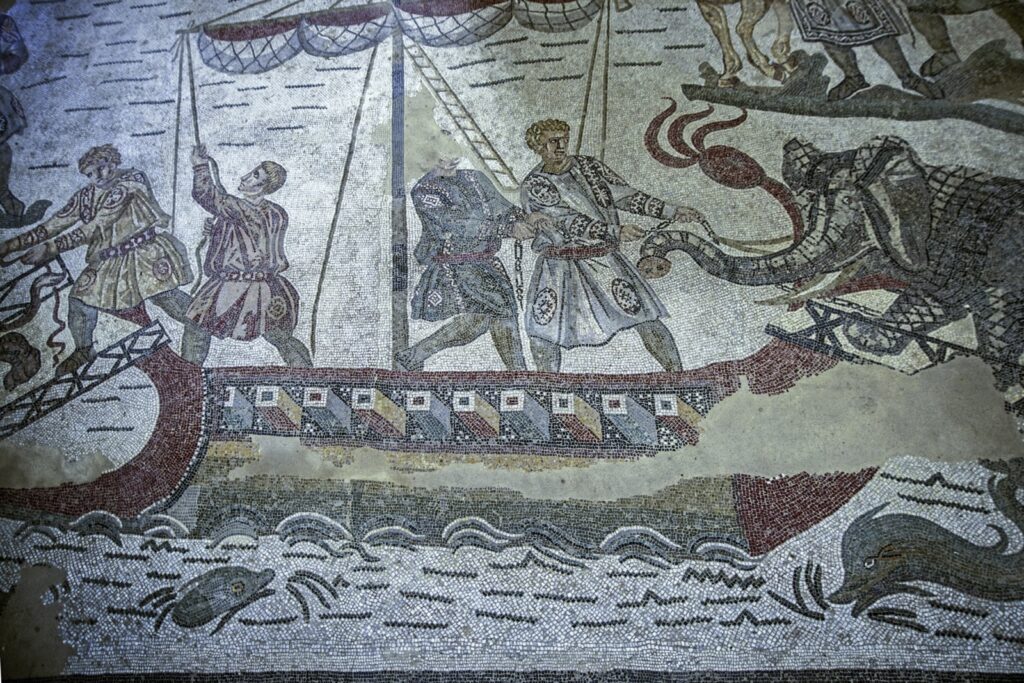 to be brought to Rome for the
venationes
to be brought to Rome for the
venationes
also serves as a link between the quarters of the basilica, the peristyle and the
triapsidal triclinium
.
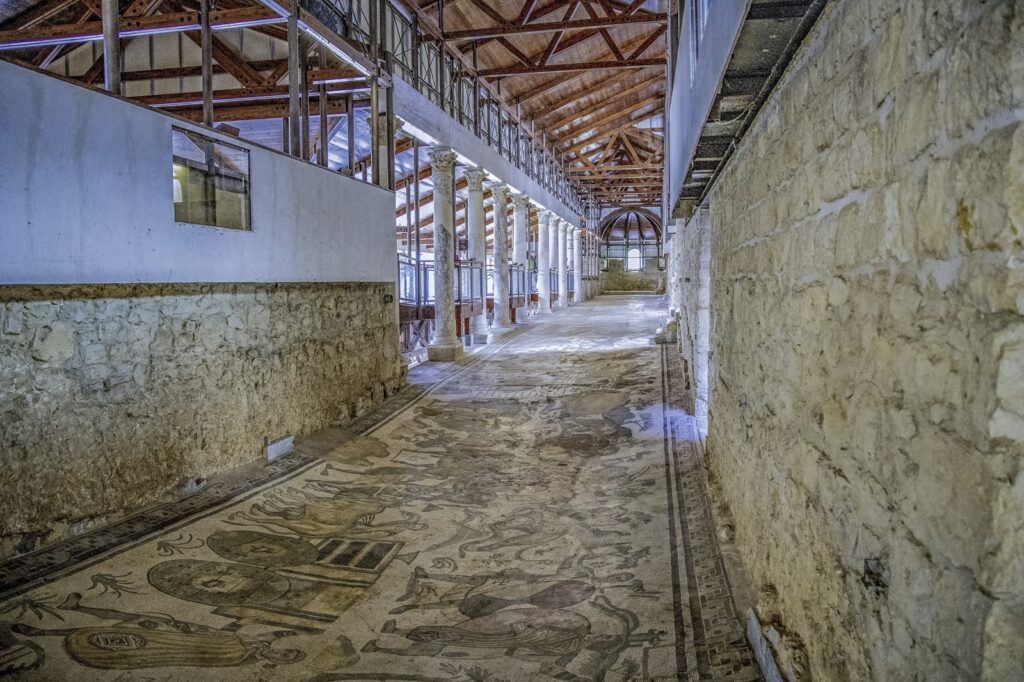 The orderly succession of rooms such as the peristyle,
The orderly succession of rooms such as the peristyle, 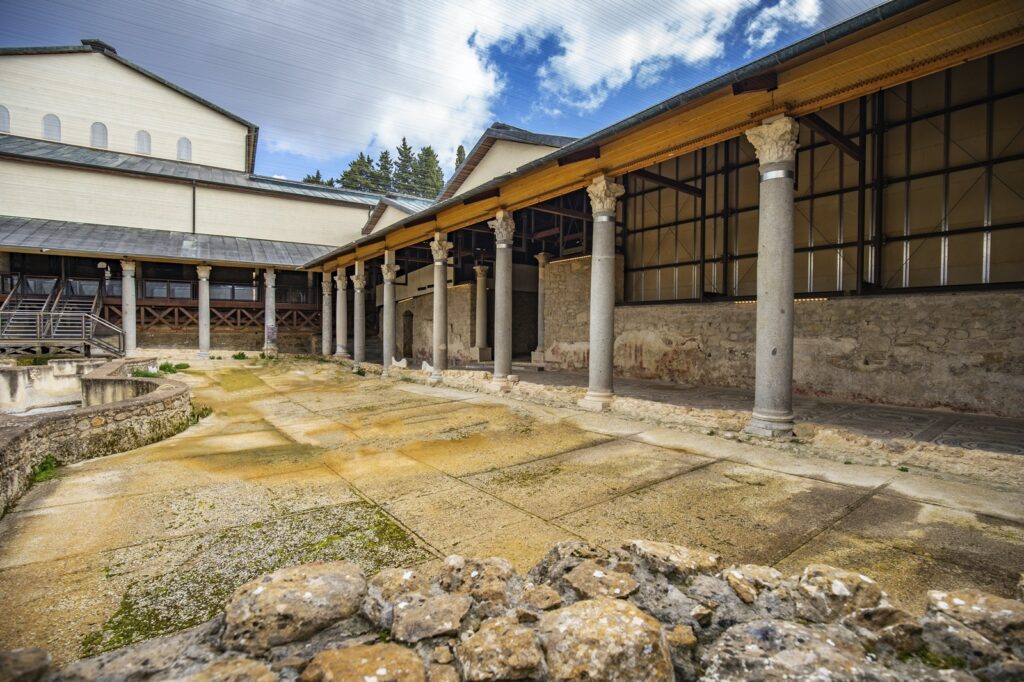 the biapsidal corridor
the biapsidal corridor 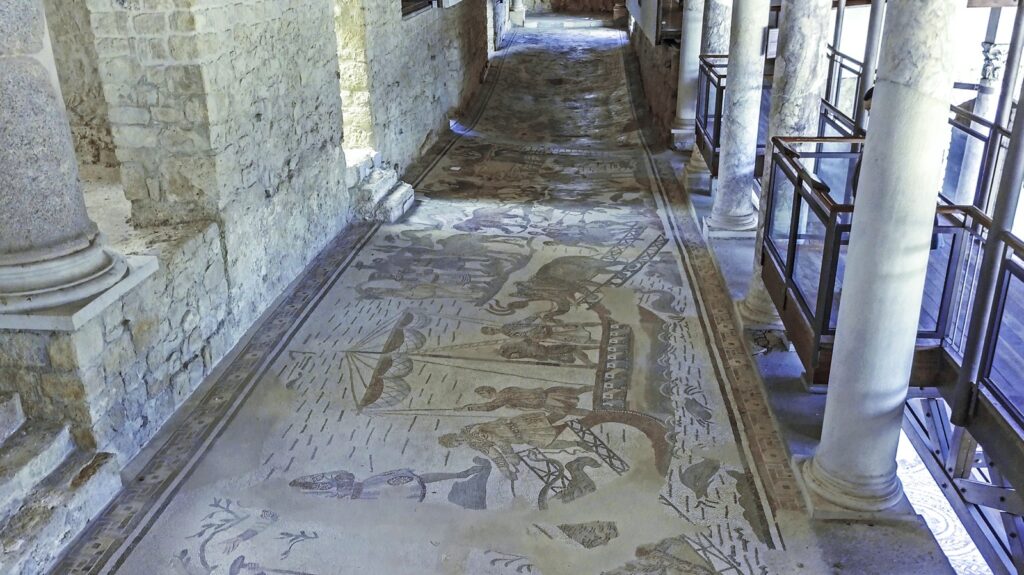 and the basilica
and the basilica 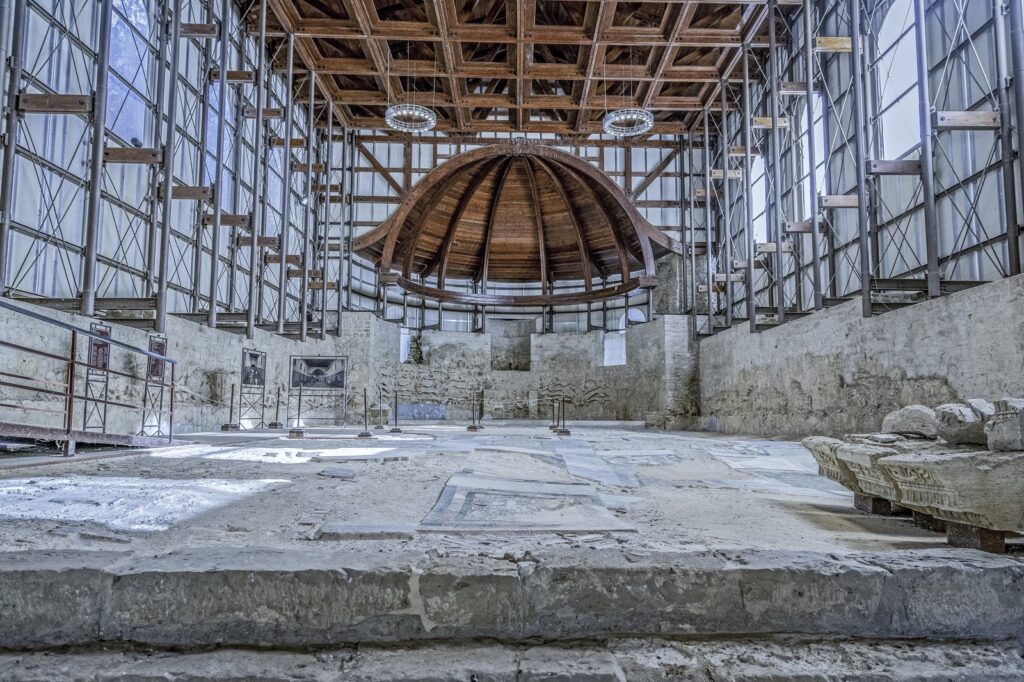 generally imply imperial palaces, but can also be identified in private villas, such as that of
Patti
generally imply imperial palaces, but can also be identified in private villas, such as that of
Patti
, in Sicily, where an
apsidal hall
opens directly onto the peristyle.
